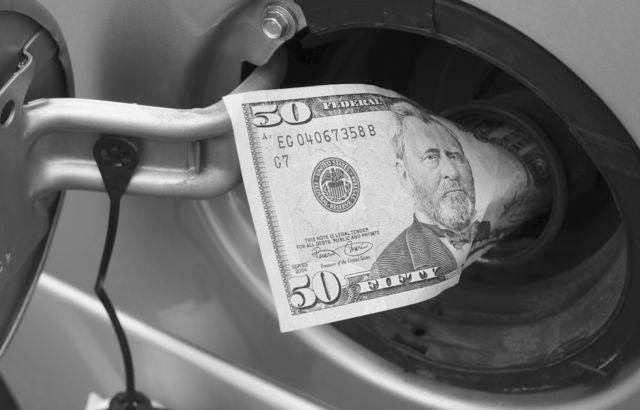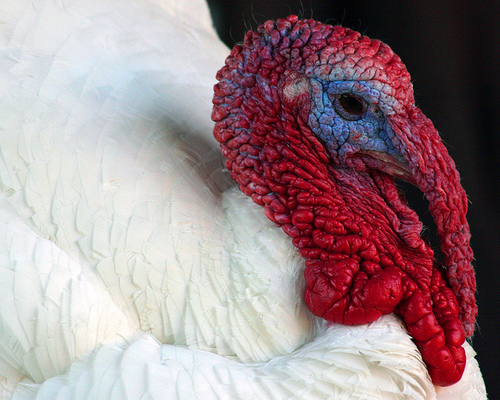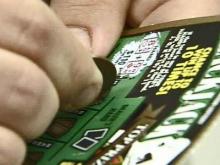Mike Napoli - Comps and Aging
.
Q. What are the chances that Napoli will be good at age 35?
A. When PECOTA draws comps, it includes "phenotypic" categories - in other words, the programmer likes the idea of matching players by height and weight.
SSI goes beyond that: it wants players who pitch similarly ... groundballers, or curveballers, or what have you. For hitters .... Darryl Strawberry had a different swing than Kyle Seager.
We're all guessing, of course. But is it better to say "we have no idea who Ichiro's comps are" or is it better to say, "Kenny Lofton was kinda like Ichiro, at least more like him than Bob Horner was."
.
Q. What would be the items on SSI's comp list for Mike Napoli?
A. .260/.360/.500, right handed, is a VERY common template. It is a distinct skill profile. Tag it the THREE TRUE OUTCOMES, BUT PLAY WITHIN YOURSELF template.
Beyond that, Dr. D would like to see:
- .260/.360/.500 (ish)
- Real big RH guy
- Uses core and shoulders to MMMMUSCLE the ball, compact finish
- Not HOF-level talent like Mike Schmidt
- Very "flat" career arc
- Catching is a special case; Napoli has never caught 100 games
If you agree that this is a basic template, there are still a whale of a lot of players here. We cannot "capture" Napoli's comps, and even if we did, does Mike Napoli have to play like the average of his comps? No - he wouldn't play like the average of his comps. But we can develop our intuition past "throwing darts blindfolded".
.
Q. Billy Butler?
A. Looks the same physically. Hits a little different. More HIT tool, less PWR tool. Butler isn't a Jay Buhner type; he's more of a hitter. And he has been ZERO threat to get you forty bombs.
Overall, about the same value as Mike Napoli -- if Napoli threw away his catcher's glove, and if Napoli played 150 games.
.
Q. Is Napoli the type of hitter who drops off at 35? At 32?
A. :shrug:: Jay Buhner, who was a VERY comparable hitter, had an excellent year at age 35. Bone hit .250/.360/.520 - in Safeco.
Richie Sexson, of course, didn't play well at 35; he was a platypus, with the tall strike zone and long levers.
Dean Palmer, Danny Tartabull, and Cecil Fielder didn't play well in their age 33-35 seasons... this isn't a study. We're drawing pictures worth 1,000 words, pictures of two-hand bludgeony RH hitters with mammoth strength.
................
Troy Glaus had an extremely similar swing to Napoli's - Glaus was a 240-lb. behemoth who used his core and shoulders to sink his weight and "scoop" the ball with a two-hand sledgehammer. ... well, Glaus did a slightly better job of using his upper arms as a handle and the bat as a whip. They both used strength, not whippiness.
Both were .260/.360/.500 two-hand righties; everything about the two, as hitters, is very comparable except that Glaus was a little bit better hitter, had a little better EYE. You wouldn't quite give Napoli a Troy Glaus level of credit, but Napoli is 95% of Glaus.
Glaus had the same career slash line as Napoli, and his comparables include Dale Murphy, Mike Schmidt, Darryl Strawberry ... from age 31, Glaus' top ten Bill James comps played 6 more years (!) at a slash line of .260/.350/.470.
Do not assume that Mike Napoli will not hit well for 5 more years. Glaus, Buhner and a bunch of guys like that were excellent at age 35.
.
Q. What's the best case against?
A. I saw an outstanding article on SBNation somewhere - Lonestarball.com I think - that pointed out Napoli's woes in 2012 came against LH'ers. It pointed out that LH'ers made a big adjustment - they kept the ball down more. And it concluded that LH'ers had solved Napoli.
It was a superb article, but I just have to disagree -- by looking at the forest instead of the trees. When is the last time you saw every LHP in the league "solve" a Jay Buhner or Troy Glaus or Cecil Fielder, permanently? Much less solve him by throwing fastballs at the knees?
Napoli's life splits aren't worse against groundballers. The premise that Napoli won't be able to hit a LHP low fastball, that this will be the key to his undoing ... I can safely say, "Nah."
............
Best case against would just be that he's early 30's.
.
Q. How are his strike zone numbers lately?
A. They looked really good in 2012. Essentially he just suffered from a low BABIP - especially against LHP's. It's MUCH better for Napoli fans that he have an off year against LHP's than against RHP's. The latter could signal a slowing bat. The former is almost certainly just noise.
My basic reaction, it doesn't look like Napoli's bat has slowed so far.
John Benson rule: what did the player look like when you last saw him? ... Napoli slugged .700 last September, 7 homers in 16 games. If the .470 SLG last year worries you, the huge September should comfort you.
.
Q. Catching?
A. We know generally that catchers can expect to hit the wall a year or two early ... that tends to assume fulltime catching. Is Josh Bard done? How long do the Geoff Zahns hang around the game?
Intuitively I wouldn't worry about a 70-games-a-year catcher. ::shrug:: if you've got a study on part-time C's and career arcs, great.
.
Q. Leaving us where?
A. The Red Sox don't want the 4th year, apparently. They see 3 years as a good idea but say, That's It. The Mariners sit here wondering, is Napoli going to give us 10 WAR over the life of the deal?
Napoli has always been kinda fragile. EDITING OUT the factor of his health, I'd be moderately optimistic about a Troy Glaus career path for him.
Your mileage may vary.
Stupid turkeys!
Okay, so, maybe you can guess, but I'm not a big fan of turkey anymore. I used to love turkey. But these days I stick to Wild Turkey, and that's only when no one's looking and I'm in my upstairs office. (WINK!!!!)
Mike Napoli's MID Projection - How Valuable?
.
Q. What are the Mariners expecting to receive from Mike Napoli?
A. Napoli slugged .630 two years ago. He slugged .470 last year, that being .450 in Arlington and .490 on the road. His lifetime SLG is .507. He walks 70 times per full season and the BB total is going up, not down.
So rotisserie analysts are going to split the difference, splitting it well towards the DWN side, and project him to a 2013 slash line of .250/.350/.500. -ish. With nothing on the line, without being too close to the situation, without emotions involved, a roto champ in St. Louis, MO is going to assume .250/.350/.500 for Napoli next year based on 100-120 games.
The question is: what's that worth? Not to a phantom drone team, but to the 2013-14 Seattle Mariners?
.
Q. What are the chances that he'll outperform a 4/$50M contract?
A. YOU ARE AT THE WRONG END OF THE ROSTER TO ASK THIS QUESTION. You save money with --- > Scrubs. So that you can buy more Stars. Stars' salaries need to meet the "not silly" standard.
You save money on some players so that you can buy players you need. Not so that you can look like a tree full of owls, wisdom personified. Get it? "Got it." Good.
Let me read that last paragraph again.
...............
It's not like the M's have a fixed $260 roto budget. They can raise it to $305 at any time. In that context, %-of-payroll questions become almost meaningless.
Tell me the value of 12/x, when you don't know the value of x. Supposing that ownership will plonk down an extra $10M, if and only if it's Josh Hamilton? In that event Hamilton costs a rotisserie $13M per year, not $23M. Supposing you played roto and one player came with a $10 dinner-for-two discount?
Lay aside the dogma when dealing with owner budget decisions. They don't lend themselves to CPA-style "this is correct, that is not correct" evaluations.
............
So the question morphs: how does the Mike Napoli option compare to the Mariners' other real-world options? The Mariners aren't competing against an XL spreadsheet. They're in a war and they can select a tank, a helicopter, or a mortar for tomorrow morning's battle.
Obviously, it's to your advantage to save a buck. But when did that become the POINT of the game, making sure that every purchase was a Hisashi Iwakuma-level heist?
.
Q. What ARE the Mariners' other real-world options?
A. Too many to list. Category A includes those options that go with the kids and pocket the money. Category B includes other 2012 free agent buys, notably Swisher or Upton, or in a longshot Josh Hamilton, or a pitcher.
Napoli would presumably be one of two imports. So in the grand scheme, it's like, [Swisher + Napoli? vs. Swisher + Gordon?] vs. one Josh Hamilton - if Hamilton is even worth holding up other options for.
.
Q. What if Napoli were useless at age 35, making $13M?
A. One thing I can tell you about GM's, for a FACT, is that they don't mind a useless year or two on the end of the contract if they got big production early.
Suppose Napoli earns $20M per year for three years, and $0 the fourth. Fans chip their teeth during year four. GM's don't. Most GM's very definitely think in terms of "that last year isn't going to be pretty, but we want the production now and we'll make it up in the big picture."
You HAVE to. Big-money thinking has to be three-dimensional.
.
Q. Supposing that Napoli did hit like Buhner or Glaus, playing C/1B/DH. What's that worth?
A. Dr. D likes WAR, for many uses ... none of which include dogmatic uses. I take it as first principles that WAR underrates RBI men. That's not just my opinion. Real-world GM's, using hordes of state-of-the-art support saberdweebs, consistently pay more for RBI men than Fangraphs thinks they should.
Napoli is a part-time player; that's the difference between him and a big star. In the games that Napoli plays catcher, he's a reasonable facsimile of Mike Piazza.
In the games that he DH's and plays 1B, he's a reasonable facsimile of Mark Teixeira or Adrian Gonzalez - subtract ten or twenty BB's per 162 games. Or take Paul Konerko - the OBP's and SLG's are the same for Konerko and Napoli.
.
Q. But how much is that worth at DH?
A. You run into the misleading idea of "Replacement Level Player." Fangraphs calculates the average production at 1B, but this average includes Albert Pujols, Miguel Cabrera, Ryan Howard, etc., and that skews the real-world "average."
You've got a player pool that includes 10-12 leviathans, and they skew a "league average," and you say "so what. This guy only slugs .500. That's not much better than league average."
Maybe there are exactly 20 astronauts in the world, and the "league average" for 30 of them (20 astronauts and ten plumbers) is a .500 astrophysics SLG. How does that help you if you're #24 on the hiring list? You've got to take into account plateaus in the resource field.
..............
Comparing Mike Napoli to, let's just pull a name out of our ears, Justin Smoak, you are talking about 6.5 runs created per 27 outs versus 3.5 runs per 27.
Or let's say you compare Mike Napoli to Miguel Olivo, rather than to a hypothetical "average/mediocre" catcher. A lineup of nine Olivos gets you 2.5 runs per game. Napoli, 6-7 runs per game.
Which one is better to talk about? Mike Napoli, versus your theoretically average player, or Mike Napoli versus Justin Smoak and Miguel Olivo?
For that lineup slot, you're talking 6-7 runs per game, vs. 3-4 runs, vs. 2-3 runs. I wouldn't characterize that as "Napoli's a meh DH who occasionally impersonates a catcher."
.
Q. Leaving us where?
A. Napoli is fragile, and is going to get more so. You're going to figure on 100, 120 games of his production. In Seattle, we've got a 9-to-make-5 lineup thing going, as they did in Texas.
For those 100, 120 games -- assuming there's no career-arc splatter here -- you're talking about an All-Star level player, near-Piazza instead of Olivo*, near-AGone instead of Smoak.
I got your "market inefficiencies" type right here, babe. Part time players.
Nuclear Weapons 4 - Manhatten Project 3
While the U.S. Manhattan project refined and enriched uranium for an atomic bomb in the early 1940, a parallel project was carried out to create plutonium. Plutonium is very rare in nature so it was necessary to create nuclear reactor in which plutonium could be generated by injecting neutrons into a mass of uranium. Most naturally occurring uranium is the U-238 isotope. When U-238 is bombarded with neutrons, some of it is converted to U-239 by absorption of a neutron. The U-239 immediately decays into neptunium-239 by a neutron emitting an electron which leaves behind a new proton. This process occurs again to create plutonium-239. A very small amount of plutonium results from this process and it must be chemically separated from the unconverted uranium and purified.
In March of 1943, the air cooled X-10 Graphite Reactor was built at the Oak Ridge facility in Tennessee. It consisted of a huge block of graphite that measured twenty four feet on each side. That cube was encased in seven feet of dense concrete as a radiation shield. There were initial problems with finding a way to encase the uranium slugs with a sealed metal shell to prevent corrosion and release of fission products. Several different approaches were tried and ultimately aluminum cans were welded with new techniques were developed. About thirty six tons of uranium were fed into the new reactor and half a gram of plutonium was created within the first month of operation. The reactor continued to produce plutonium for the Manhattan Project for the next year and was retired early in 1945.
While the X-10 was in production, work proceeded at the Hanford facility in Washington on the more advanced water cooled Reactor B that would be water cooled. Six reactors were planned altogether. They were housed in buildings that were one hundred and twenty eight feet high. A total of eight hundred and thirty eight uranium slugs were inserted into Reactor B in mid-September of 1944. In late September, after the reactor had gone critical and fission had begun, the control rods were withdrawn to begin plutonium production. The reactor ran for a while but then the power level dropped and the reactor stopped. It turned out that Xenon-135 being produced during the reactor operation was poisoning the reaction by absorbing neutrons. By loading all two thousand tubes in the reactor, proper functioning was achieved and plutonium could be produced.
Chemists had been working on the problem of how to separate the plutonium from the uranium. Little was known about the chemical properties of plutonium so a lot of basic research was necessary. A process was developed that involved bismuth phosphate that allowed precipitation of plutonium or precipitation of the uranium and impurities from solution. The separation plants consisted of four different buildings which housed a process cell, a concentration building, a purification building and a magazine store. Construction began in April of 1944 at Hanford before final choice of a processing method. New methods of remote control had to be developed to deal with the radioactive materials going through the sequence of buildings. In February of 1945, the first shipment of about two and one half ounces of ninety five percent pure plutonium was sent to the Los Alamos facility in New Mexico.
X-10 Graphite Reactor:
Running trails on Rabbit Island in Cambodia
As much as I love exploring cultural sights, southern Cambodia’s diverse mix of beautiful islands is hard to pass up. With so many to offer, I found myself spending much of my 30-day visa island hopping, and taking in the sun. With that being said, I also found myself running a lot of laps on beaches. Rabbit Island, though, has a little more to offer.
With the island being very small, finding a good place to even do beach laps was difficult. The main beach is only about a 600m stretch, and with the way it’s curved, and the amount of boats tied to the shore, it’s difficult to run here. Luck was on my side though, and at the southern end of the beach, there is an 800m, single track stretch of dirt path through a jungle clearing.
The path is relatively flat, very soft on the legs, and between breaks in trees, has a beautiful view of the Gulf of Thailand. The stretch dead ends on to a very small piece of beach real-estate, great for finishing the lap, and turning around to head back. The beach itself isn’t used by tourists, mostly due to the seaweed farming in the water right off the sand. It is quite a bizarre sight, but is far enough out to splash in the water while running to cool off.
The path itself is used as a trail between local houses and the main beach and port. At times, I found myself having to either stop and let locals pass, or having locals laugh at my strange western antics, as they moved to the side. With the stretch being so short, I passed the same people a few times before they actually finished walking from point A to point B. The jungle, though, did break up the monotony of doing laps on sand, and with the trail being dirt, I actually wore shoes and was able to get in a longer run.
For those not interested in running laps, Rabbit Island does offer a trail that goes all the way around the island. Though on paper it seems like a better option, the often times hidden and disappearing trail goes through deep mud, thick jungle and other difficult terrain for those on the adventure. It is doable, of course, but be prepared to stop your run to hike, back track and swim.
Hitting the lottery, budget travel style
While some of us are cheap (and I mean real cheap) and others just on a strict budget, saving a buck here or there is a common thing among backpackers. Even while some down beers and eat western food, while they could be saving a ton by eating local, backpackers are always talking about how poor they are.
To save money, some opt out of regular eating, or take jobs where their accommodation and food is paid for. Others just seem to complain. Regardless, while traveling on a shoestring, there are always means to save a buck here or there. Below is a list of things sometimes offered while traveling that are gold mines for those trying to save money.
Free water bottle refills: Many times, travelers are in places that are out of their own climate. For myself personally, Southeast Asia is really hot and I down water like it’s my job. Water can add up, and so can the amount of plastic a traveler uses if they are buying bottle after bottle. Places offering free water refills, or even cheaper refills than buying a new bottle, help save the environment and save a few bucks in the long run. Try and stay at places, or visit destinations, that offer water bottle refills.
Free WiFi and power: Yes I did add power to this last item. Though we all know free WiFi is amazing, a handful of places (cough cough, Laos, cough) are starting to charge people to plug in their electronics while eating and using the WiFi. WiFi isn’t always free, so if you can find cafes, restaurants, or more specifically, dorms and hostels with free WiFi and power, you are in the money. It saves a lot of hassle, and allows you to keep in touch with the world that exists outside of the travel bubble.
Free bread or drink with meals: Back home, at least in the good ole’ US of A, most restaurants will offer free bread or some other small morceaux at the beginning of your meal. Though I’ve heard rumors this isn’t true all over the west, for me back home, it is. With that being said, some spots you visit have picked up on this fact, and certain places, even on the local spectrum, are starting to offer a small snack at the beginning of a meal to help curb your hunger. Along with this, in many Asian countries, tea is an essential part of the meal. In places like Cambodia and Myanmar, a large pot of tea is sitting on your table waiting for you at the beginning of every meal. In Cambodia specifically, with this year having seen a draught, many restaurants will bring you a glass of ice to make your tea nice and cool. It's awesome!
Free things are a traveler’s bread and butter. Make sure to keep an eye out for anything that will help stymie superfluous costs, and keep you spending time in locally owned establishments.
Big Foot 2
The Pacific Northwest is noted for many things. Impressive corporations like Amazon, Microsoft and Boeing. The Cascades. The Olympics. Three dormant volcanoes. A cold Pacific Ocean.
And Big Foot.
Big Foot, or the Sasquatch, is probably equally as impressive as other monsters, but receives less credit because of the Sasquatch’s surprisingly stealthy nature. The big gorilla guy is not often seen and when he is seen, even the locals don’t believe it.
THIS author from Slate is trying to contend that Big Foot is nothing but a meme. A cultural fabrication meant to attract the attention of the people. But there are those who believe otherwise. There are those amongst us here who believe that Big Foot is real. I’m not saying that I’m one of them, but there are organizations dedicated to finding out information on the “realness” of Big Foot.
One man even wants to look for Big Foot by using a remote-controlled blimp. So far, he hasn’t received funding for the project. Jeff Meldrum, of Idaho State University, asked for $30,000 for the ability to fund a project for a remote-controlled blimp for the express purpose of finding out definitively whether or not Big Foot even exists. (No one knows for sure whether he wants the funding as a way to actually prove the existence of Big Foot or as a way to enjoy a bigger and better version of a battery-operated helicopter.)
Questions like:
“What is a Big Foot?”
“How many are there?”
“Where do they come from?”
and even “Wasn’t this all shown to be fake?”
The more important questions of how to fight a Big Foot are not asked or even necessarily addressed at all. Do you fight Big Foot like a brown bear or like a Black Bear? How fast can Big Foot climb up trees? Does Big Foot swim and if so, could Big Foot take on the Lochness Monster in a swamp duel or would it take several Big Foots?
As in the case of zombies, there are no easy answers to the questions regarding the Big Foots (Big Feet?) out there. Please contact the forestry department if you do happen to notice a Big Foot in your vicinity as they will likely be the best prepared to deal with the situation appropriately.
It should be safe to do so as the Big Foot controversy is not quite on the same level as the Roswell conspiracies. We are huge fans of our local legend here in the Pacific Northwest.
Thanksgiving generosity warms the heart
As I continue to watch and hear heartbreaking stories from the Hurricane Sandy devastation in the Northeast, I also continue to have flashbacks to my own community's epic struggles following a disaster. In our case, it was a deadly April 2011 tornado that literally ripped Tuscaloosa, Alabama, apart at the seams. Recovery from these kinds of large scale disasters takes a really long time, and all these months later, Tuscaloosa is still in need. My heart goes out to everyone in New Jersey and elsewhere, as they have a long, hard road ahead.
There is great news, though: With the help of a generous community, recovery can be less overwhelming. You'll get national support, sure, but once the headlines fade a bit, it's the locals who step up the most.
This is exactly what happened on Thanksgiving Day 2012 here in Tuscaloosa. For the second year in a row, members of the Alberta Baptist Church served a wonderful holiday meal to countless residents in need of some Thanksgiving cheer. Alberta Baptist, by the way, is a historic local church that was virtually destroyed by the tornado. The church is still rebuilding, but they're starting from within -- helping the people first.
Buildings are important, of course. A church needs, well, a *church* for the congregation to gather and worship. That hasn't stopped the Alberta Baptist Church from reaching out. This year's Alberta Community Thanksgiving Lunch was a huge success, feeding so many and once again uniting a community that was almost ripped apart less than two years ago.
It's efforts like these, I think, that benefit local communities hardest hit by disaster the most. Little by little, this great city of mine continues to pick up the pieces and rebuild, but along the way, spirits are being renewed.
College Bowl Picture: Everyone Else
Mountain West
- Las Vegas Bowl
- Poinsettia Bowl
- Armed Forces Bowl
- New Mexico Bowl
- Hawai'i Bowl
- The Las Vegas Bowl gets first shot at a MWC team, and Boise State (9-2) would seem to have the inside track. They finish their season against Nevada on Dec. 1.
- Fresno State (8-3) and San Diego State (8-3) both have a shot to share the conference title with the Broncos. The Bulldogs need a win over Air Force, and the Aztecs play Wyoming. San Diego State is likely to get a home game in the Poinsettia Bowl.
- Air Force (6-5) automatically gets the bid to the Armed Forces Bowl if eligible, and it is.
- That leaves Nevada (7-4) and Fresno State for the final two slots. Reports are that Nevada would go to New Mexico and Fresno State to Hawai'i, but that's subject to change.
Western Athletic
1. Famous Idaho Potatoes Bowl
- The once-proud WAC is disintegrating, and is likely to have no football programs left in the near future. A victim of survival-of-the-fittest realignment.
- But, in 2012, there are still games being played, and four teams snagged bowl eligibility.
- Utah State (9-2) seems almost certain to win the (probably last) WAC title (the Aggies only need a win over 1-9 Idaho), and that would seem certain to earn a spot in Boise for the Potato Bowl. Utah State will be heading to the Mountain West.
- Louisana Tech (9-2) was angling for much bigger fish (they were nationally ranked, and their only loss had been to highly ranked Texas A&M by two points), but the Bulldogs fell to Utah State in overtime, and dropped from the rankings. Now they look to take one of the open spots in the nearby Independence Bowl. Louisiana Tech will head to Conference USA.
- San Jose State (9-2) will have a chance to boost its status with a win over Louisiana Tech this weekend, and will head to wherever someone has a slot. It could be the Military Bowl in Washington, D.C. The Spartans will also be leaving for the Mountain West.
- Texas-San Antonio (7-4) is also eligible, and could latch on anywhere. The Roadrunners are also set for Conference USA.
Sun Belt
- GoDaddy.com Bowl
- New Orleans Bowl
- The Sun Belt is usually the weakest of all major-college (Bowl Subdivision) conferences, but it got some note this year when Louisiana-Monroe defeated Arkansas and other members played well against the SEC. The conference will have two slots guaranteed, and a bunch of teams angling for spots that other conferences will leave empty.
- Arkansas State (8-3) and Middle Tennessee (7-3) will play Dec. 1, with the winner looking like conference champion. They are the most likely to fill the two guaranteed slots.
- Louisiana-Monroe (7-4), Louisiana-Lafayette (6-4) and Western Kentucky (6-5) all have a chance to fill in for missing Big Ten or Big East squads, and even Troy (5-6) could sneak in somewhere with an upset over Middle Tennessee.
A simple conversation
I sat on a bench on the side of a river running through Siem Reap in Cambodia. Most people come to Siem Reap to see Ankor Wat, then head to Pub Street to see Ankor What? bar. I’m not a big drinker, and though the temples were beautiful, my legs and my budget couldn’t handle another day. I decided to read my book near the river.
As I read “A Farewell To Arms,” I took time between pages to watch people pass by. Runners seemed to love the path, both local and foreign alike. It was nice to watch the people run.
As I came to the last five pages in my book, I decided in my head I would go to back to my hostel after the book. Before I could do it, though, an elderly Cambodian man sat down at the bench next to me. He said hello, and I replied. He seemed to want to chat.
After exchanging subtleties, he began to tell me about life in Cambodia. He said it was hard, and said he had been forced to move from Battumbang to Siem Reap for work. As he spoke, his left eye would open and shut. I wondered if it was a mild case of turret syndrome. He spoke English wonderfully.
He began to speak of his dreams of farming, but how he didn’t have the money to do it. I couldn’t help but start to put up my guard, thinking he would ask me for money. My guard took away from my ability to make conversation, and after a few moments we went silent. I bid the man farewell, and went on my way.
He never asked me for money, I thought, as I walked the dirt road back to my hostel.










